Your one-stop shop guide to all things attic insulation—including costs, types, and where and why to insulate.
Looking to make your home more comfortable and energy efficient? Insulating your attic is one of the most powerful home upgrades you can make.
Not only will proper attic insulation make your home more comfortable right now and lower your energy bills, but it can also increase your home’s value and reduce your carbon footprint.
It’s a wise upgrade all around.
Spoiler alert: You could get high-performance attic insulation upgrades from one of Sealed’s trusted contractor partners. Tap here to see if you qualify.
In this expert guide, we’ll cover attic insulation cost, attic insulation types, and plenty more.
Table of contents
- Why you should upgrade your attic insulation
- When to upgrade attic insulation
- How insulating your attic can increase home value
- What is R-value (and why it matters)
- The different kinds of attics that need insulation
- Attic insulation types
- How much does attic insulation cost?
- Installation costs for insulating an attic: Should you DIY your insulation to save?
- Are attic insulation installation costs worth it?
- How to get your attic insulated
Why you should upgrade your attic insulation
Here are the three biggest reasons you should upgrade your home’s attic insulation:
- Attic insulation makes your home more comfortable.
- Insulating your attic is one of the BEST ways to boost your home’s energy efficiency.
- Upgrading your attic insulation solves (or prevents) a variety of homeowner issues.
Let’s look at each of these reasons below.
90% of U.S. homes are under insulated
NAIMA.org study
1. Attic insulation makes your home more comfortable
This is the obvious one. Insulation creates a thermal boundary between your home and the temperature outside, keeping outside temperatures out and inside air in.
When it comes to your house’s attic, creating the best thermal boundary possible is especially important, because your roof is where a lot of the inside heat escapes (in the winter) and outside heat comes in (during the summer).
Insulating and air sealing your attic can go a long way toward keeping conditioned air where it’s supposed to be.
For a quick visual of how attic insulation and air sealing can help your home stay more comfortable year round, check out the video below:
2. Insulating your attic is one of the best ways to boost your home’s efficiency
About 35% of U.S. residential energy use is wasted (1). Yikes!
Homeowners could save up to 45% with the right insulation and air sealing upgrades, according to one study.
Why do we keep talking about air sealing? Learn what air sealing is and why it’s important.
Insulating your attic is one of the most effective ways to reduce your monthly energy bills. Discover exactly how insulation saves energy here.
(You might even be able to get attic insulation with an energy-savings guarantee if you qualify.)
3. Upgrading your attic insulation solves (or prevents) a variety of homeowner issues
If you still aren’t convinced that attic insulation upgrades are an excellent idea, get this—attic insulation can help solve common homeowner problems, including:
- Damaging winter ice dams
- A too-hot upstairs in summer
- Uneven temperatures in your home (even a cold basement or cold floors!)
- A drafty house
- Indoor air quality issues and poor home ventilation
- A house that’s too humid
And that’s just naming a few!
Proper attic insulation can reduce moisture in your home, make your roof last longer, extend your HVAC system lifespan, and more!
When to upgrade attic insulation
Some types of insulation start to degrade around 10 years of age, which means even if you’ve added some fiberglass batts or loose-fill to your attic in the last decade, it might already be time to upgrade.
Signs you may need new attic insulation:
- Increase in the amount of dust in your home
- Noticeably uneven temperatures in areas of your home that used to feel fine
- Cold drafts in the winter
- Stuffy rooms in the summer
- An upstairs that feels like a sauna in July
- You are hearing strange noises (i.e., pests) in your attic or walls
- There’s visible deterioration in your attic insulation (moisture, discoloration, crumbling pieces)
- Your HVAC system can’t keep your house comfortable
For a deeper dive, tap here to read How long does insulation last.
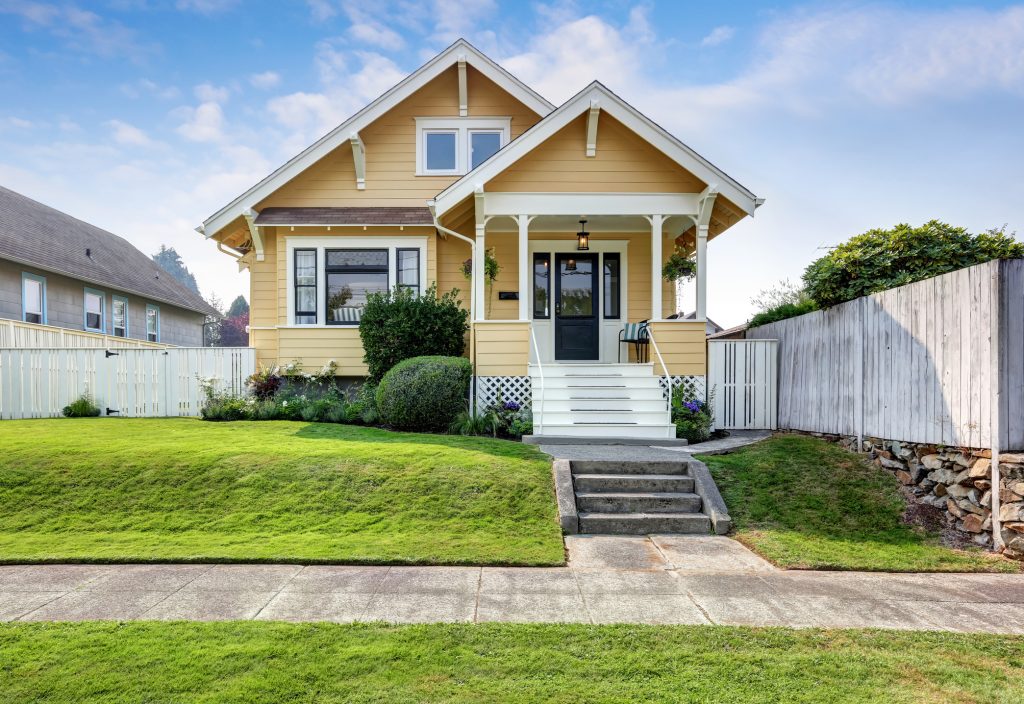
Does adding attic insulation increase home value?
Yes, insulating your home’s attic (or upgrading existing insulation) can absolutely increase your house’s value, and it’s one of the best improvements you can make to get a more comfortable living space.
Homeowners can recoup an average of 116% of the cost of their attic insulation upgrade, according to a 2016 report from Remodeling magazine.
(Compare that to the average financial return on a kitchen upgrade—which is between 56.1% and 52.5%.)
What is R-value? Why is it important to consider when considering attic insulation costs and types?
R-value is a measure of how well a barrier or surface—like a window, wall, or layer of insulation—resists the flow of heat.
Here’s one way to think about it:
When you pour hot water into a paper cup, it can burn your hand. But if you pour hot water into a thermos, you won’t feel anything. That’s because the thermos has a much higher R-value than paper.
When it comes to insulation, R-value is one of the most important things to consider.
The higher the R-value, the more effective the insulation will be at keeping heat inside your house in wintertime or outside your house in summertime—which means your HVAC system won’t have to work as hard throughout the year.
And if your insulation’s R-value is too low for your local climate? A lot of your energy dollars will escape right through the walls and ceiling.
Why is this important? Lots of houses (especially older houses) are under-insulated. Remember, 90% of U.S. homes don’t have enough insulation (2). And energy efficient building codes have only been around since the 2000s.
When a house is under insulated, the R-value of the installed insulation isn’t high enough to provide an adequate thermal barrier.
And depending on when your house was built, some areas may have never been insulated at all and might be missing:
- Garage insulation
- Basement insulation
- Crawl space insulation
- Insulation for hidden attics
All this can make for some chilly winters and muggy summers.
Plenty of homeowners don’t know that their insulation is the problem, though.
In fact, many people assume that their home is uncomfortable because their windows are old.
Homeowners often assume that their home is uncomfortable because their windows are old. It’s more likely it’s your insulation!
And, while drafty windows might be part of the problem, they’re usually not the main issue. The fact is that even the priciest, most technologically-advanced windows available will only improve your house’s R-value by a few points.
Properly installed insulation, however, can give you a boost in R-value of up to 50 points. That’s why we often caution our customers against buying new windows unless absolutely necessary.
Yes, new windows can make your home more energy-efficient, but insulation typically makes a far bigger impact on your home’s heating and cooling efficiency.
Even the priciest, most technologically-advanced windows available will only improve your house’s R-value by a few points. Insulation typically makes a far bigger impact on your energy savings.
Insulating the attic: First, how many attics do you have?
Before we jump into attic insulation types and the cost of attic insulation, let’s take a pause and ask a question: How many attics does your home really have?
This question is important because some houses have multiple kinds of attics and some of them are hidden. In fact, many homeowners don’t even know their home may have more than one attic. And even hidden attics can affect your home’s efficiency.
Here’s a quick list of the types of attics you might find in your home; each type of attic requires a unique approach:
- Standard upstairs attic
- Knee wall attics
- Flat roof (or almost no attic)
- Devil’s peak attics
- Scuttle attics
- Finished and unfinished attics
Check out our full guide to attics to get an in-depth look at the different types.
Regardless of what type of attic you have in your home, if it isn’t well-insulated and air sealed, you’re going to lose a lot of your energy dollars through the roof.
That’s why attic spaces should be at the top of your list for insulation upgrades.
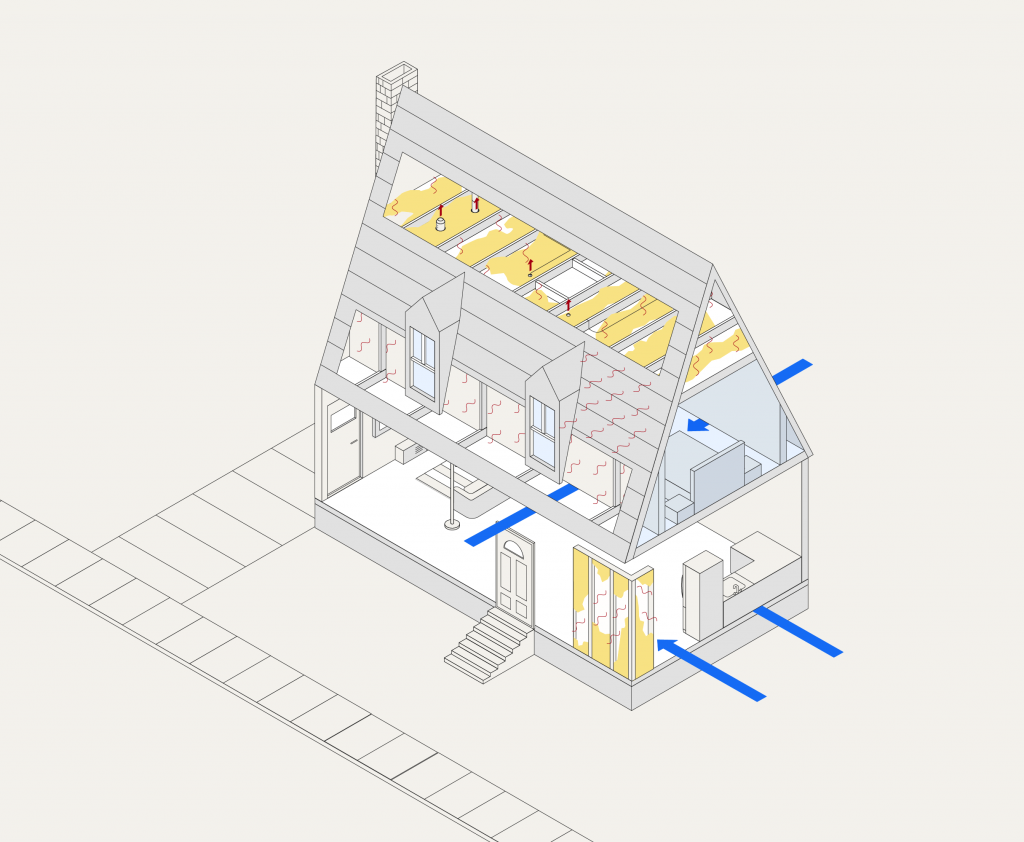
Attic insulation types
Let’s talk about one of the major decisions you’ll need to make when insulating your attic: Which type of attic insulation should you use?
Before we go over the various types of insulation, though, an important caveat: Insulating your attic and home can be a complicated task.
It’s crucial that you select the right materials and the right spots to insulate, and—most importantly—the right partners to help with the work.
While it’s important to educate yourself about your insulation project, getting professional help is the best way to be sure that the project actually solves your climate control problems.
At its best, DIY attic insulation runs the risk of not saving you as much on energy as you’d like, and at its worst?
It can cause moisture issues in your home.
Check out this lighthearted, vintage YouTube video below titled Grandma’s House about insulation supported by EnergyStar.gov for an example of how insufficient insulation upgrades can lead to big challenges:
Okay, hopefully you got a good chuckle (and learned a lot!) from that video. Now, let’s dive into the most popular types of insulation for attics.
Here’s a quick list, and we’ll cover the pros and cons of each below:
- Fiberglass attic insulation
- Spray foam attic insulation
- Cellulose attic insulation
- Less common attic insulation types
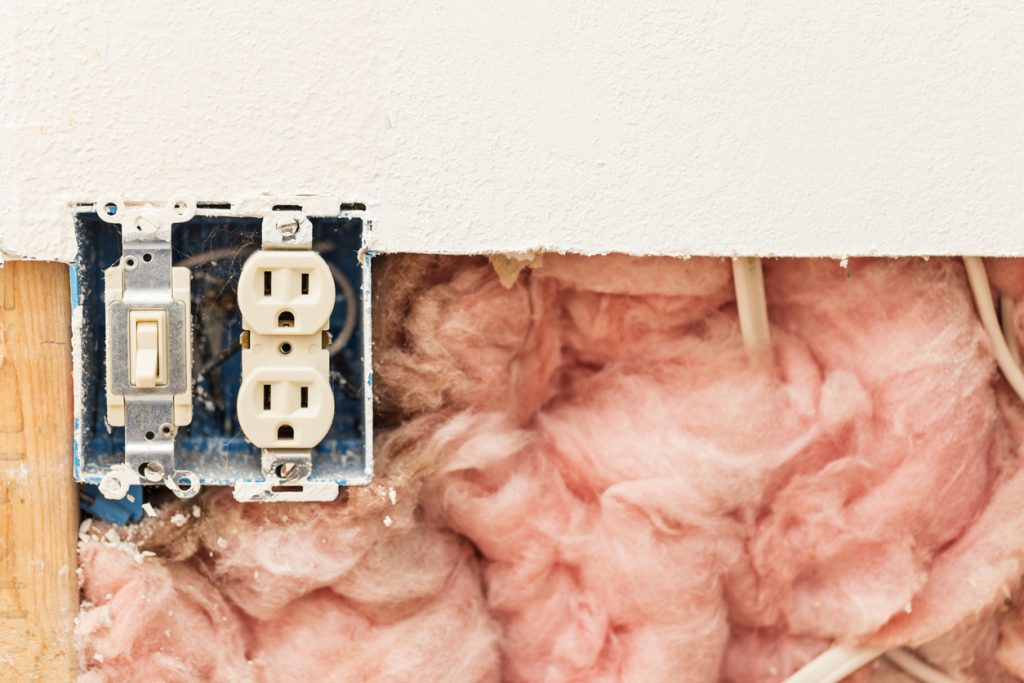
Fiberglass attic insulation
When you think about home insulation in general, fiberglass insulation is probably what you imagine.
It’s often recognizable by its signature pink and yellow colors, and it’s a great choice if you want to insulate areas like wall cavities or knee walls.
This type of attic insulation often comes in fiberglass batts, also known as blanket, batt, or rolled insulation.
But it’s important to note that blanket or batt insulation also comes in other materials, such as cellulose, mineral wool, or even recycled cloth materials.
(We’ll specifically be talking through fiberglass here.)
While fiberglass batting is a popular DIY attic insulation solution, it’s not always the best long-term solution for every project.
You’ll need to take some extra precautions when using fiberglass, too, because it can be susceptible to moisture and it’s also a favorite snack of raccoons.
Pros of fiberglass insulation:
- It’s easy on the budget and easy to install.
- It’s moisture-resistant when a vapor barrier is also used.
- It requires minimal maintenance.
- It’s fire-resistant.
- It has a lower carbon footprint than some other kinds of insulation.
Cons of fiberglass insulation:
- It can create airborne fibers, which isn’t great for your health or home air quality. (Don’t forget a dust mask if you decide to DIY!)
- It has a lower maximum R-value than some other insulation types.
- It’s easy to install it incorrectly, which reduces its overall efficiency.
- It decreases in R-value over time, as it breaks down over time.
- It’s a favorite snack of raccoons (and we assume you don’t want them in your attic).
Estimated R-value per inch of fiberglass insulation:
Fiberglass has an R-value of about 2.9–4.3 per inch.
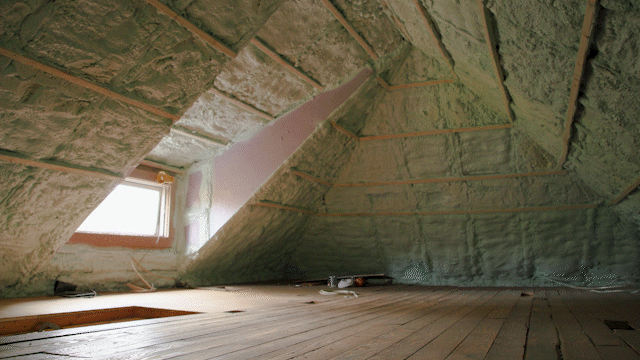
Spray foam attic insulation
Spray foam attic insulation comes in two varieties: open cell and closed cell.
Open cell is lighter and less dense. It’s better for filling spaces that have lots of little nooks and crannies.
Closed cell is more dense, completely impermeable, and has a higher R-value. But it’s more expensive and can be trickier to install.
Pros of spray foam attic insulation:
- It offers an air-tight seal (especially when paired with attic air sealing).
- It doesn’t require a vapor barrier, unlike fiberglass.
- It’s great in unusual, awkward, and hard-to-insulate spaces—it covers studs, joists, everything.
- It has a longer lifespan and stops heat loss for a longer amount of time
Cons of spray foam attic insulation:
- It has a higher upfront cost than other insulation types.
- It has a higher carbon footprint than other insulation types.
- It can shrink in locations with severely fluctuating temperatures. (But an experienced spray foam insulation contractor correctly install—or recommend an alternative if they have concerns.)
Estimated R-value per inch of spray foam insulation:
Spray foam insulation clocks in at an R-value of approximately 5–6 per inch.
Cellulose attic insulation
Cellulose is a type of blown insulation made from shredded recycled paper, recycled clothing, and even recycled cardboard boxes (all those Amazon boxes need somewhere to go for their second life). It’s sometimes called loose-fill insulation.
While cellulose doesn’t look pretty, the earth loves it—it has negative lifecycle carbon emissions.
Before installation, the recycled material is treated to make it fire-retardant and pest-repellant.
(Cellulose insulation comes in batts, too, but blown-in insulation is more common.)
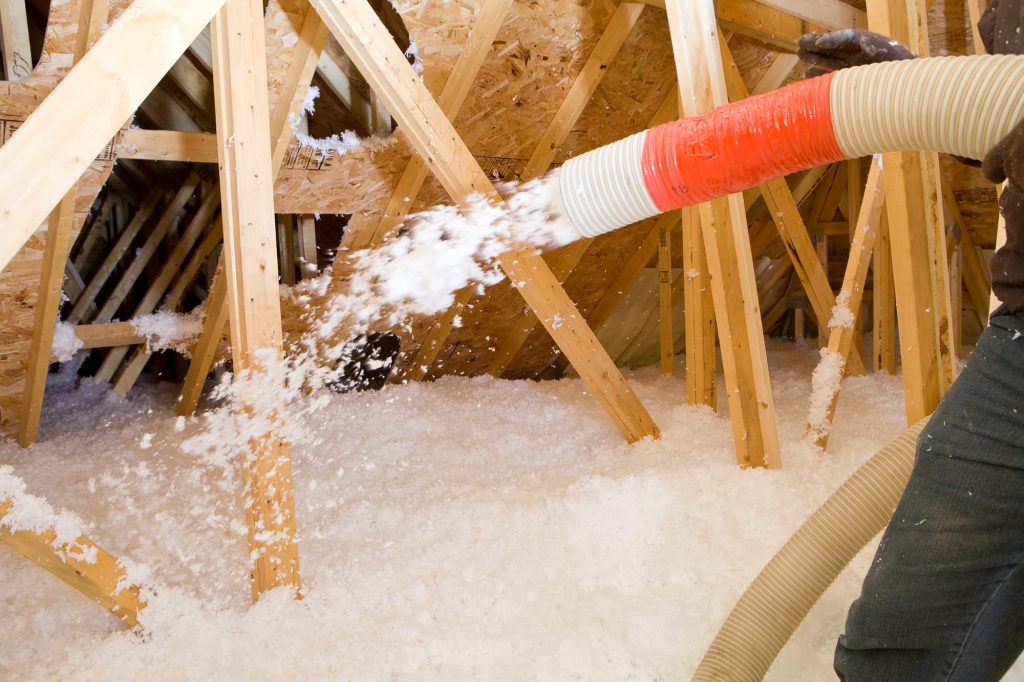
Pros of blown-in cellulose attic insulation:
- It’s environmentally friendly and usually made of recycled materials.
- It makes for great ceiling or wall insulation.
- It’s fire-resistant.
- It’s a cost-friendly option for homeowners.
- It has lower health risks than fiberglass.
Cons of blown-in cellulose attic insulation:
- It can absorb moisture easily (that’s why air sealing is crucial!).
- It can create a lot of dust, especially upon install or removal.
- Its R-value reduces over time.
- It requires a vapor barrier.
Estimated R-value per inch for cellulose attic insulation:
Cellulose attic insulation has an R-value of about 3.2–3.8 per inch.
Attic insulation types—alternative materials
There are a few alternatives and additions to the most common attic insulation types listed above:
- Structural insulated panels: These are commonly used when building a new home and aren’t used when upgrading attic insulation.
- Reflective insulation: This is a layer of foil that may be added to rigid foam, plastic film, or polyethylene bubble insulation to reflect heat.
- Havlock wool insulation: This type of insulation is made from treated sheep’s wool. It’s non-toxic and is most commonly found in batt form, although Havlock can also be blown-in.
- Rockwool insulation: This material is made from thermal stone wool and is most often seen used in panels, although it can also be utilized in insulation upgrades of older homes.
How much does attic insulation cost?
Attic insulation upgrades that take a whole-house approach for lasting efficiency and comfort can cost you $15,000 to $20,000 on average when completed by an experienced and certified home performance contractor.
But each house is unique. Your overall attic insulation costs cost will depend on:
- The insulation material you use
- The size of the attics in your home
- What insulation is already present in the house and it’s condition
- The cost of professional installation in your area
- What additional measures—such as insulation removal or pest control—need to be included in the project
- Financing costs for your home upgrades
- If you get air sealing done at the same time (you really, absolutely should)
Why is this average cost higher than others on the internet?
If these numbers look higher than other numbers you’ve seen across the web, there’s a good reason (well, a few actually):
- The above average cost range is based on a whole-home approach, not just the attic itself.
Most homeowners don’t realize they have air leaks throughout their home and insulation issues at the foundation, basement, fireplace flues, and crawl spaces that affect the house top-to-bottom. The attic is just one piece of the puzzle (although an important one) in fixing efficiency and comfort issues in your home. - A great majority of the information available online about attic insulation costs is based on pre-inflation numbers and the cost of materials alone.
Our average range above is based on 2022 numbers and expert installation. The truth is, insulation materials on their own can be pretty inexpensive. Just look up the cost of fiberglass! But material costs alone can be misleading when used to determine the cost of a professional job, which requires experience, know-how, a combination of insulation materials, and time to get the job done right. - Many estimates that are public across the web don’t include the cost of expert-level air sealing or removing old insulation.
And this is a crucial part of correctly installing new insulation. You don’t want to leave that old stuff in there, and you don’t want to cut any corners by skipping steps. You won’t get the results you want
The best way to determine how much attic insulation will cost for your house is to talk to a professional and get an installation install quote.
That said, here are some ballpark numbers you could expect to pay for individual materials only:
Cost of attic insulation materials alone
Let’s dig into what you might expect to pay for just the attic insulation materials:
- Fiberglass batting insulation cost
- Spray foam attic insulation cost
- Blown-in cellulose attic insulation cost
Cost of fiberglass batting insulation
The average cost per square foot for fiberglass insulation is between $0.64–$1.19, though the exact cost will depend on its thickness, R-value, overall quality, and more.
Keep in mind that this doesn’t include the cost of labor, removing old insulation, or air sealing (which is necessary in most cases).
Here’s why you should air seal your home.
Cost of spray foam attic insulation
The cost of spray foam attic insulation is calculated by what’s called board foot, which is determined not only by square footage, but also depth.
Cost calculations get tricky here, so it’s best to work with a professional for an accurate estimate.Average board foot prices for spray foam attic insulation are below (this does not include labor cost, removing older attic insulation, or air sealing):
- Open-cell spray foam costs anywhere on average 35 to 55 cents per board foot (3)
- Closed-cell spray foam costs approximately $1.00 – $2.00 per board foot (4)
Cost of blown-in cellulose attic insulation
The average cost for blown-in cellulose attic insulation is between 0.83 and 0.91 for materials.
Again, this doesn’t include labor, air sealing, old insulation removal, or equipment rental to blow in the material.
Renting a cellulose insulation blower can cost anywhere from $70 to $205 per day (not including a rental deposit).
Installation costs for insulating an attic: Should you DIY your insulation to save?
Should you DIY attic insulation?
Only if you absolutely know what you’re doing—one misstep and you could have some lasting, expensive problems to fix. Tap he re to read To DIY or not to DIY insulation.
If you’ve done a home improvement project before, you already know that the biggest expense in a project isn’t materials, it’s labor.
The best way to know what you would pay is to get a home energy assessment and quote for your project.
Analyzing your home for energy-efficiency, planning an insulation strategy, and installing the appropriate insulation are difficult tasks that require professional know-how.
It’s worth the expense to pay someone who knows what they’re doing.
But there’s good news: There are plenty of insulation tax credits and rebates to offset project prices.
Are attic insulation installation costs worth it?
Installing attic insulation is one of the home upgrades that can significantly increase your comfort while increasing your house’s long-term value. It’s worth it. And it’s definitely worth it to get the job done right the first time.
If your house qualifies, you could get high-performance, expertly installed attic insulation and an energy-savings guarantee with Sealed.
Get attic insulation—without breaking the bank
You might be able to qualify for rebates on professional attic insulation—with complete attic air sealing.
Our network of highly vetted, expert contractors take a custom approach to each house.
Your house will get exactly what it needs—and nothing it doesn’t—to feel more comfortable and cut energy waste.
Ready to get started? Complete our easy 2-minute questionnaire to get connected to the right contractor for your high-performance insulation upgrades.
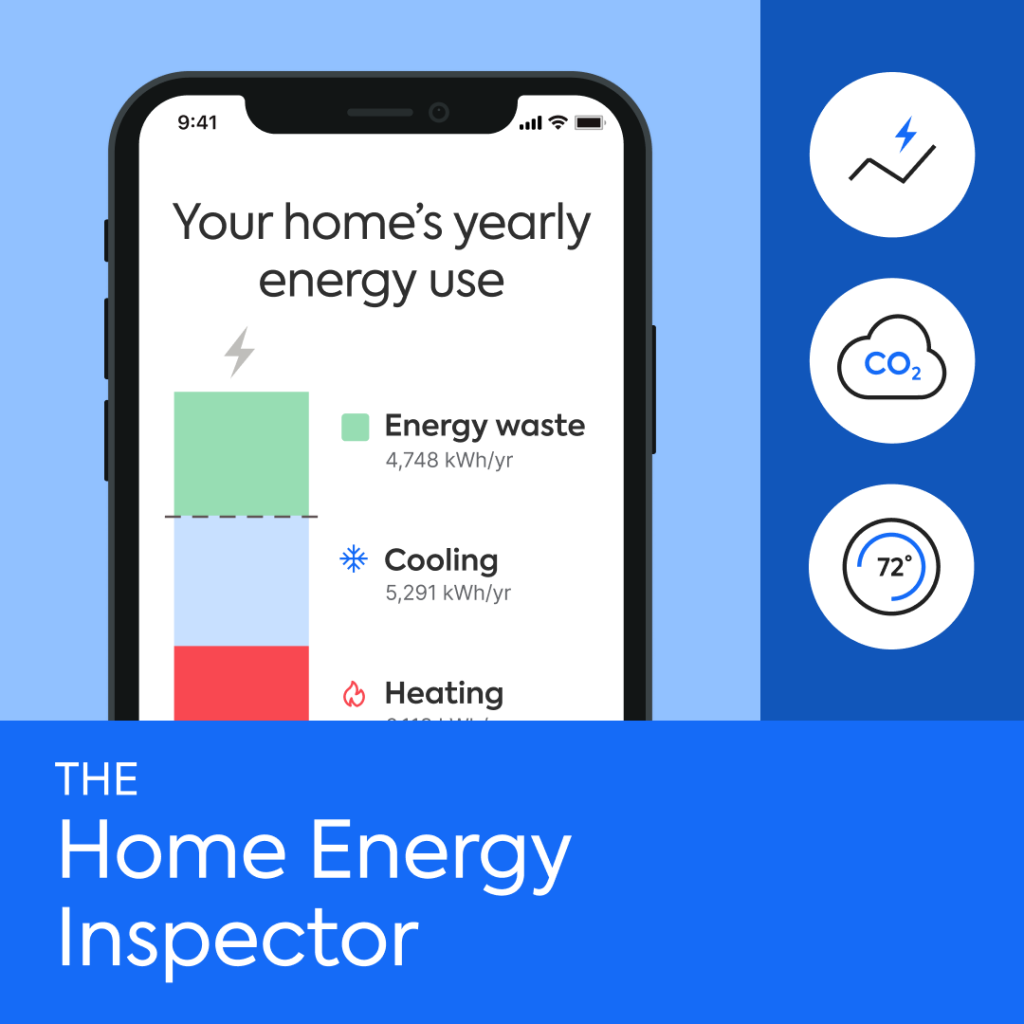
Ready to crunch the numbers?
Check out our home energy usage calculator to see where you could cut energy waste BIG TIME.
Tap here to try the home energy use calculator.